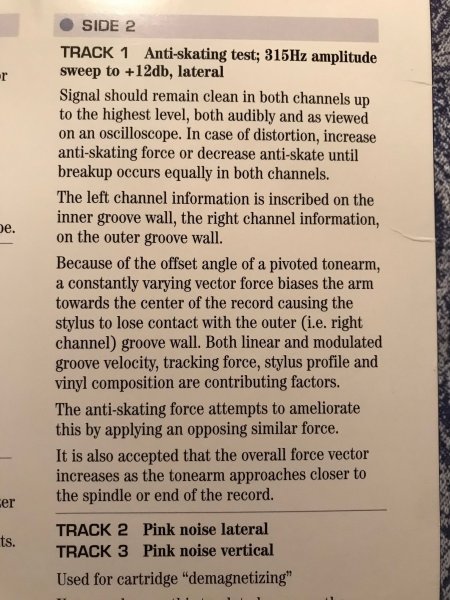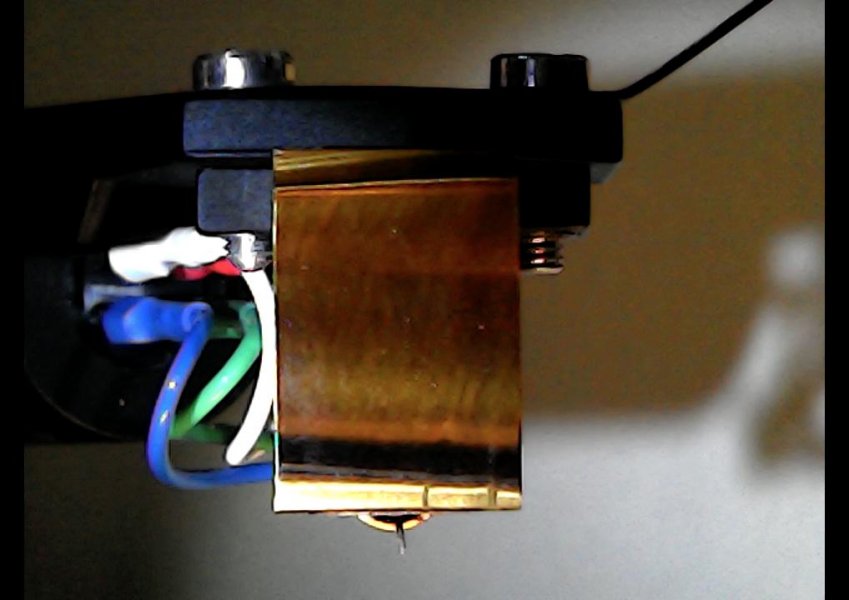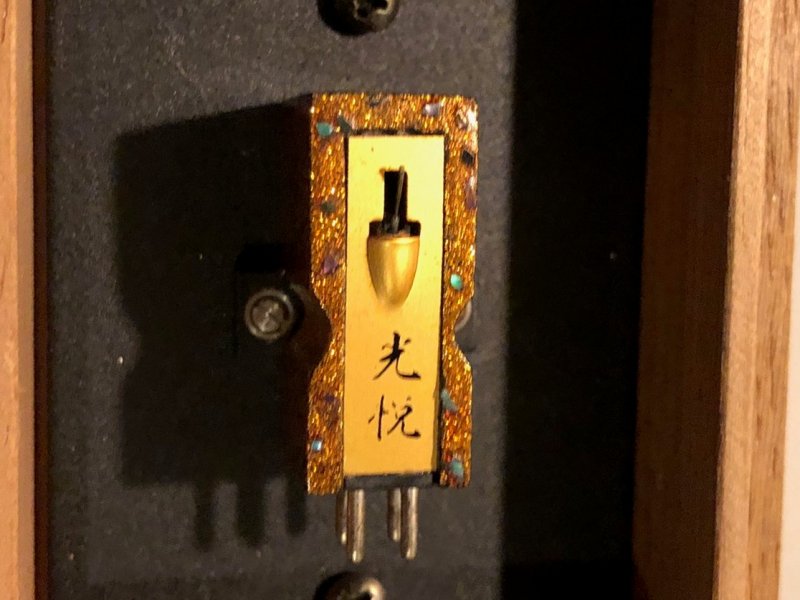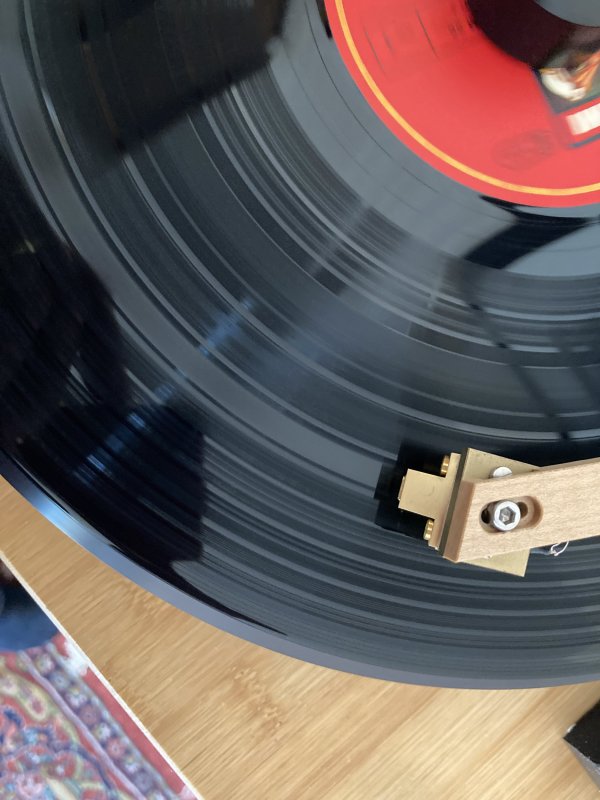Hi Phil,
A few comment for you that I hope you will find helpful.
First, a cantilever like that is highly suggestive not of excessive skating forces but of a bent suspension wire (or, perhaps, a cracked/shifted suspension damper). This cartridge is in definite need of repair and no amount of anti-skating force will fix the internal problem. Skating forces alone - even at, say, 5gm VTF, will not permanently deform a cantilever like that. (my rationale follows later in this post)
Secondly, the blank record test for skating/anti-skating is HIGHLY variable and not at all reliable since skating force is a function of coefficient of friction which is itself a function of VTF, stylus profile, tonearm length, distance from center of record, vinyl formulation and a few other less influential factors. You could take two different cartridges with varying stylus profiles on the same tonearm and record, have the same VTF applied to both and witness varying skate velocities on a grooveless record. In this example, skating velocity depends upon the surface area and surface profile of the part of the stylus that touches the grooveless record.
The last time a coefficient of friction test was done was in the 1970's (separately by Shure, Bruell and Ortofon, if I recall correctly.) They all arrived at similar findings: namely, that anti-skating should be at about 10% of VTF to provide the best AVERAGE anti-skating force during playback. See the bottom article HERE for a bit more info:
https://www.wallyanalog.com/blog
So, consider the 10% figure and apply that to my example above of having 5gm VTF. In this example of 5gm VTF, you'd only be living with - on average - 0.5gm of skating force. A constant 0.5gm horizontal force isn't enough to damage a cantilever suspension like that. That cantilever has taken a whack by something and it hasn't been the same since.
I have purchased most of the equipment to perform a coefficient of friction study of our own. I think it is necessary to re-do this experiment as stylus profiles have become much more severe since the 1970's and therefore will have different coefficient of friction during play. There are a few other attributes that I'd like to measure (musical genre, vinyl treatment formulas, etc.) that can influence coefficient of friction that I think may be worth testing as well. When this test is done, I'll present the data and write a JAES paper on it for peer review.
Cheers,
J.R.










